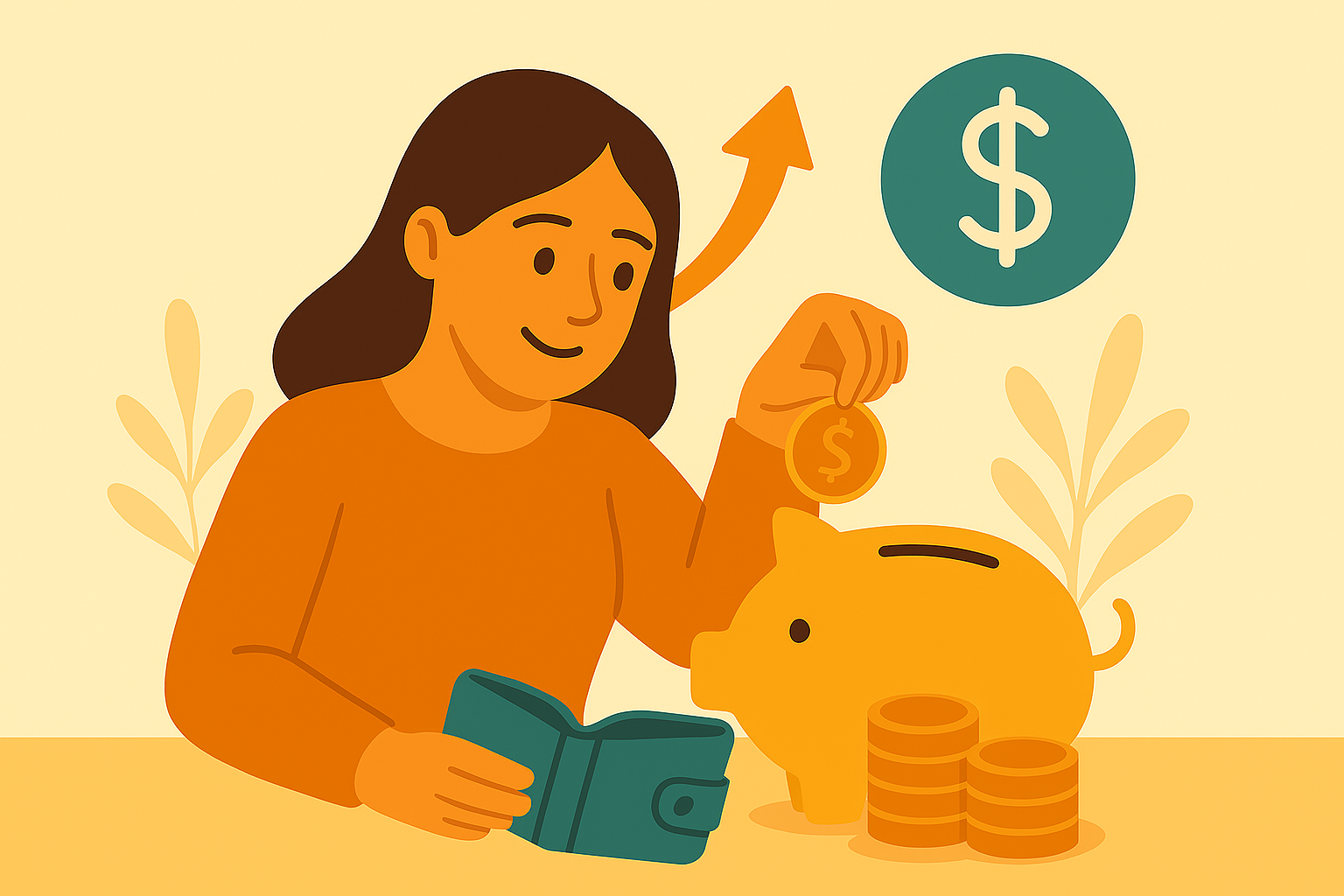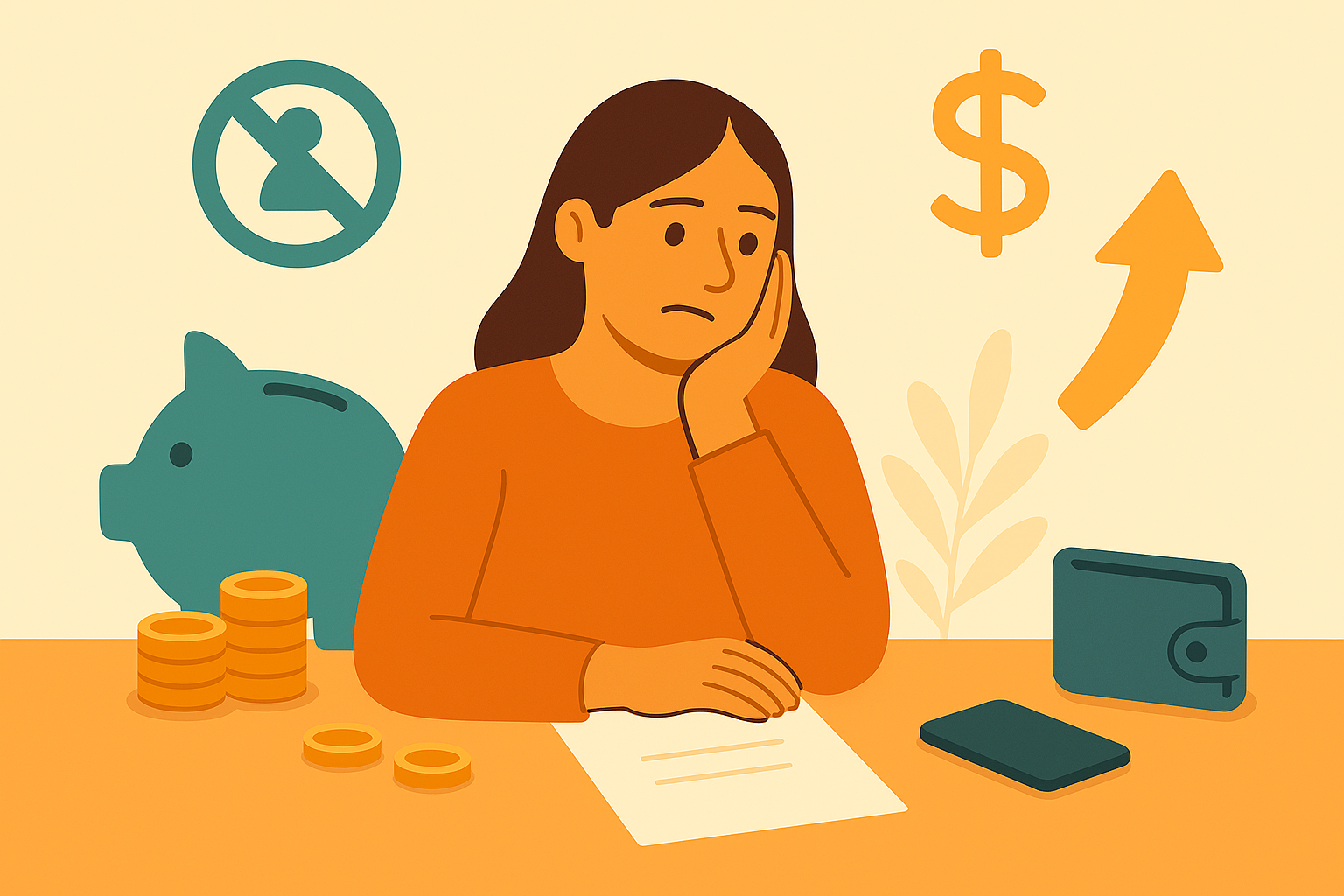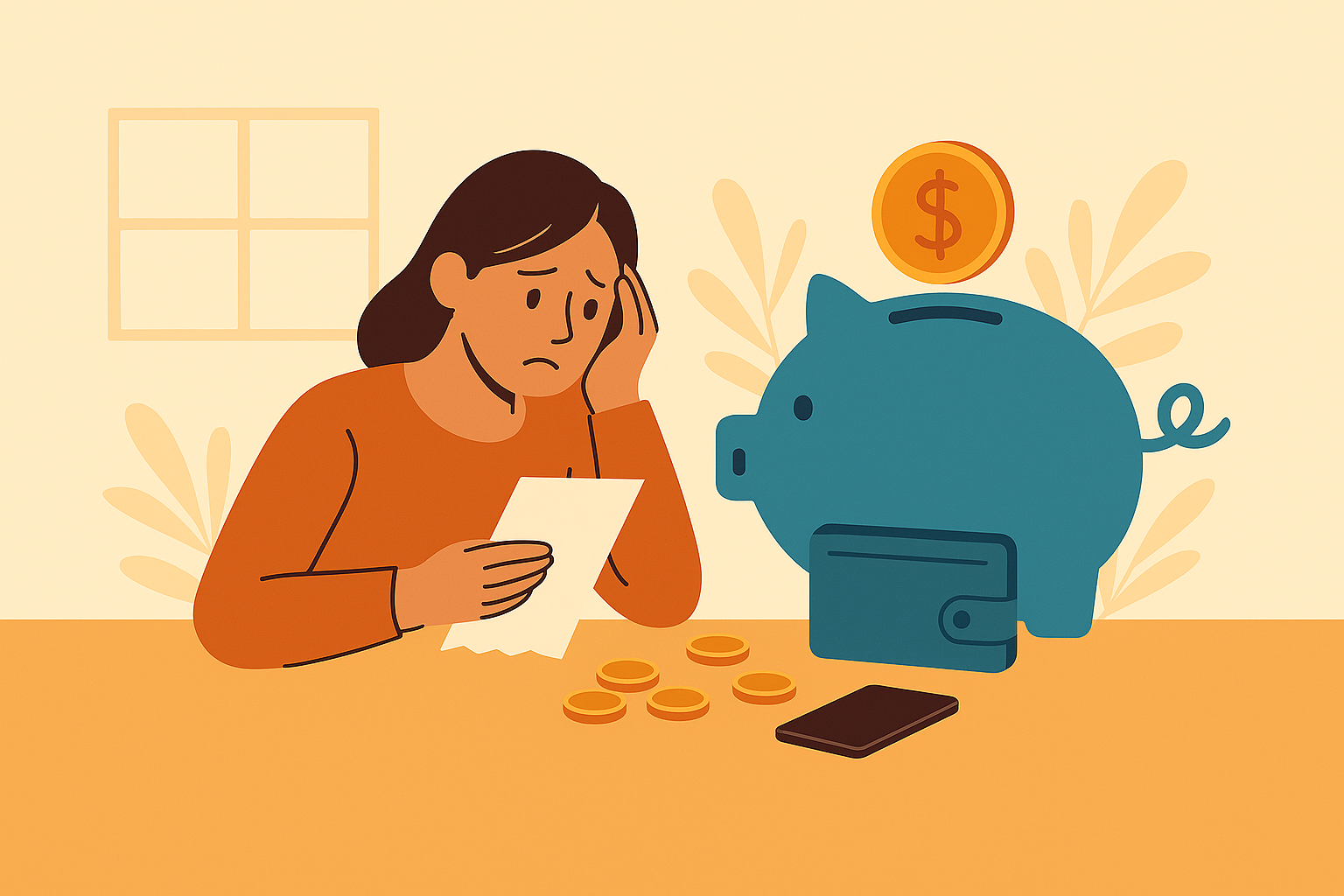Learning how to save money on a tight budget might feel impossible right now, but you’re about to discover it’s more achievable than you think. If you’ve ever checked your bank account three days before payday and seen $47 staring back at you, this guide is for you and will show exactly how to break that cycle.
Here’s what nobody tells you about how to save money on a tight budget: it’s not about making more money. Instead, it’s about working smarter with what you’ve already got. You won’t find advice here about “just stop buying lattes” like that’s going to magically fix everything. Additionally, there won’t be suggestions to eat ramen for every meal or never have fun again. Furthermore, there’s definitely no pretending that saving money is easy when you’re already stretched thin.
What you’ll discover are 16 realistic, actually-doable ways to save money on a tight budget. These aren’t theory. Rather, they’re strategies that work for real people with real bills and real financial stress.
No judgment. No shame. Just practical help for when money feels impossible.
Let’s get into it.
1. Track Every Single Dollar for 30 Days
This sounds about as fun as watching paint dry, but stay with this for a second.
Saving money on a tight budget becomes impossible when you don’t know where your money is actually going. Most people think they know, but they don’t.
Try this experiment: Guess how much you spent on food last month. Go ahead, take a guess.
Now go actually add it up. Include groceries, takeout, that coffee on Tuesday, the vending machine at work, and the drive-through on your way home because you were too tired to cook.
The actual spending is probably 30-50% higher than your guess.
When you track every single purchase for 30 days, you’ll discover what most people call “mystery purchases” – money that just disappears and you can’t even remember what you bought. For most people, this is $100-200 a month just evaporating into thin air.
Use a budgeting app like Honeydue or Goodbudget, or just keep a running list in your phone’s Notes app. Every time you spend money – and this means every time, even that $1.50 bottle of water – write it down.
At the end of 30 days, look for patterns. Where’s your money actually going? What surprises you? Additionally, where are you spending way more than you thought?
You can’t fix what you can’t see. Therefore, this is step one.
2. Meal Plan Like Your Life Depends On It
Real talk: food is probably bleeding you dry.
Between groceries, takeout, delivery, coffee runs, and those “I forgot to pack lunch so I’m hitting the drive-through” days, food spending spirals out of control fast. For a lot of people, food is the single biggest variable expense they have control over.
And the brutal truth? Most of that spending is avoidable with just a little bit of planning.
People who meal plan can cut their food spending from $800-900 a month down to $300-400. Same person. Same appetite. Just better planning.
Sunday becomes planning day. First, check what’s already in your fridge and pantry. Next, plan 5 dinners for the week – not 7, because you need flexibility for leftovers or those nights when life happens. Then, make a specific grocery list based only on what you need for those meals. Finally, check for sales and coupons on the items you need.
Monday becomes grocery day. Shop with your list and ONLY your list. Additionally, avoid shopping when you’re hungry – that rookie mistake costs big. When you get home, prep anything that needs prepping. Chop vegetables, portion snacks, marinate meat.
Tuesday through Sunday, you cook those meals. Pack leftovers for lunch the next day. Resist the delivery app temptation.
The key is keeping meals simple. You’re not trying to be a Food Network star. Instead, chicken, rice, and roasted vegetables work because they’re cheap, easy, and you can make enough for three meals.
This one change can save you $400-500 a month. That’s $5,000 a year. Consequently, that’s a fully-funded emergency fund in a year just from meal planning.
3. The 24-Hour Rule Saves You From Yourself
There’s a mind-blowing savings hack that requires zero willpower in the moment: just wait.
If you want to buy something that’s not an absolute necessity, wait 24 hours before purchasing it.
That’s it. That’s the rule.
See something you want online? Add it to your cart, close the tab, then come back tomorrow. Want to buy something at the store? Take a picture of it and leave. Come back tomorrow if you still want it.
About 70% of the time, you’ll either forget about it completely or realize you don’t actually want it. The impulse passes. Your wallet stays intact.
The other 30% of the time, you’ll still buy it. However, at least it was a conscious decision instead of an impulse. You’ll feel better about the purchase and have way less buyer’s remorse later.
This works especially well for online shopping. That dopamine hit from clicking “buy now” is strong, but it fades fast. Tomorrow-you is way more rational than right-now-you when you’re scrolling at 11pm.
4. Automate Your Savings the Day After Payday
Listen very carefully: You will never save money by waiting until the end of the month to see “what’s left over.”
There will never be anything left over. Ever. Money expands to fill the space available, like a gas or a teenager’s mess.
What works? Set up an automatic transfer from your checking account to your savings account that happens the day after your paycheck hits.
Even if it’s just $10 per paycheck. Even if it feels pointless because it’s such a small amount.
$10 per paycheck = $20/month = $240/year
Will $240 make you rich? No. However, it’s $240 more than you had before, and it requires exactly zero willpower or discipline.
The secret is that your spending adjusts around what’s left. With $1,500 in checking, you’ll spend close to $1,500. But with $1,200 in checking because $300 got automatically moved to savings, you’ll make it work with $1,200.
You can’t spend money you don’t see.
Start with whatever amount feels uncomfortable but not impossible. Maybe that’s $25. Maybe it’s $50. The exact number doesn’t matter as much as building the habit and making it automatic.
5. Hunt Down Those Sneaky Subscriptions
Sit down right now with your bank statements from the last two months. Scroll through every single line item.
There’s a guarantee here: you’re paying for at least one subscription you completely forgot about.
Maybe it’s that streaming service you signed up for to watch one show and never cancelled. Or that meditation app you used twice in January. Perhaps it’s the meal kit delivery you paused but didn’t actually cancel. Alternatively, it could be the premium version of an app you don’t even remember downloading.
Most people find $50-100 a month in subscriptions they’re not using. That’s $600-1,200 a year you’re giving away for literally nothing in return.
Pull up two months of bank and credit card statements. Go line by line – yes, every single line. Write down every recurring charge. Ask yourself: “Have I used this in the last 30 days?”
If the answer is no, cancel it right now.
Don’t fall for the “but I might use it later” trap. You can always resubscribe if you actually miss it. Spoiler alert: you probably won’t.
And if you’re paying for multiple streaming services, consider rotating them. Watch everything you want on Netflix for two months, cancel it, then subscribe to Hulu, binge that, cancel it, and rotate back. You don’t need them all at once.
6. One-Week Challenges Keep You Sane
Most budgets fail for one reason: trying to cut everything at once leads to feeling deprived, hating life, and blowing the entire budget in one weekend of “screw it.”
There’s a better way: one-week challenges.
Pick one expense category and cut it for ONE WEEK. Not forever. Just seven days. Then rotate to a different category.
Week 1: No food delivery Week 2: No coffee runs Week 3: No impulse shopping Week 4: Repeat week 1
You’re never cutting everything at once, so it doesn’t feel like punishment. Delivery is still available during weeks 2 and 3. Similarly, coffee is still there during weeks 1 and 3. It’s just one category for one week.
This rotation approach can easily save you $100+ a month, which is $1,200+ a year. But more importantly, it builds awareness. After a few rotations, the natural tendency is to cut back even during the “allowed” weeks because you realize you don’t need these things as much as you thought.
One week at a time. That’s manageable. That’s sustainable.
7. Five Minutes on the Phone Can Save Hundreds
This one feels scary because most people hate confrontation. However, it’s shockingly effective and way easier than you think.
Call your internet provider, your insurance company, and your cell phone provider. Tell them you’re shopping around and considering switching. Then ask what they can do to keep your business.
That’s it. That’s the script.
This isn’t being rude. This isn’t being difficult. Instead, this is being a smart consumer. Companies have retention departments whose entire job is to keep customers from leaving. Use that to your advantage.
Real results people have gotten from a few 5-minute phone calls:
- Internet bill reduced by $25/month
- Car insurance reduced by $18/month by shopping around
- Cell phone reduced by $30/month by switching to a discount carrier
- Gym membership got 3 free months just for threatening to cancel
Total potential savings: $75-100/month = $900-1,200/year
For literally 15-20 minutes of phone calls.
The worst they can say is no. If they say no, you’re exactly where you started. But most of the time? They’ll offer you something.
8. Generic Brands Are Literally the Same Thing
You’re paying extra for packaging and marketing. That’s it.
Store-brand cereal is made in the same factories as name-brand cereal. Furthermore, generic medications have the exact same active ingredients as name brands by law. That fancy cleaning spray and the store-brand version have nearly identical formulas.
Do a blind taste test. Get the generic and name-brand version of the same product. Try them both. See if you can even tell the difference.
For about 90% of products, you can’t.
The exceptions where brand might actually matter: mayonnaise, aluminum foil, trash bags, and sometimes paper towels. Everything else? Generic is identical.
Switching to generic brands on your regular grocery items can save $40-50 a month. That’s $500-600 a year for buying the exact same stuff in different packaging.
Your ego isn’t worth $600.
9. The Library Is Free Money (Sort Of)
Remember libraries? Those buildings full of free stuff that you already pay for through your taxes?
Yeah, those still exist, and they’re incredible.
Most libraries offer:
- Physical books (duh)
- E-books through apps like Libby or Overdrive
- Audiobooks
- Movies and TV shows
- Magazine subscriptions
- Free wifi
- Museum passes
- Tool lending programs
- Event tickets
If you’re spending $30-50 a month on books, audiobooks, or entertainment subscriptions, there’s a better option. The library has it all for free.
Download the Libby app right now. Connect it to your library card. Browse their digital collection. It’s like Netflix for books, except it’s actually free and you don’t have to feel guilty about the monthly charge.
This alone can save you $300-600 a year.
10. Cash-Back Apps Are Free Money (If You’re Smart)
Cash-back apps only work if you’re buying stuff you were already going to buy.
Starting to buy random things just to “get cash back” means doing it backwards. That’s not saving money. Instead, that’s spending money to save money, which is the dumbest thing ever.
But used correctly? Yeah, it’s literally free money for purchases you’d make anyway.
Apps worth using:
- Rakuten for online shopping (can get $50-100 back per year)
- Ibotta for groceries (another $40-60 per year)
- Your credit card’s rewards program (can be $100-200 per year)
Total potential: $200-300 a year without changing your spending at all.
The key is treating it like a bonus, not a reason to spend. You’re not buying something because it has 5% cash back. Rather, you’re getting 5% back on something you already decided to buy.
11. Calculate Cost Per Use Before Buying
Before buying anything over $20, do this quick math: cost ÷ number of times you’ll use it = cost per use.
$60 pair of jeans you’ll wear 50 times = $1.20 per wear → Good deal
$30 trendy shirt you’ll wear 3 times = $10 per wear → Bad deal
$200 winter coat you’ll wear 100 times over 5 years = $2 per wear → Great deal
$80 kitchen gadget you’ll use twice = $40 per use → Terrible deal
This completely changes how you shop. The focus shifts from buying cheap stuff you’ll barely use to thinking about actual value.
Sometimes spending more upfront is actually cheaper in the long run if you’ll use it constantly. Conversely, sometimes that “great deal” is actually expensive as hell when you calculate cost per use.
Do the math before you buy.
12. One In, One Out Stops the Clutter Creep
This rule does two things: it prevents you from accumulating endless stuff, and it forces you to really think about whether you need something.
The rule is simple: Before buying something new, you have to get rid of something old in the same category.
Want new jeans? Cool, donate or sell an old pair first.
Want a new book? Finish one from your current stack and donate it.
Want a new coffee maker? Get rid of your old one first.
Most of the time, when the realization hits that you have to actually do the work of getting rid of something, the decision becomes clear that you don’t need the new thing badly enough. The purchase impulse dies, and your wallet wins.
Plus, your home stays manageable instead of turning into a storage unit for things you bought and forgot about.
13. Turn Your Clutter Into Cash
Look around your house right now. How much stuff is sitting there untouched for the last six months?
Clothes that don’t fit. Kitchen gadgets you used once. Old electronics. Books you’ll never read again. Additionally, furniture you don’t need and hobby equipment from that thing you tried for two weeks.
All of that is money just sitting there.
Spend one weekend decluttering and selling stuff on Facebook Marketplace. No shipping hassle, no complicated listings. Just take a photo, set a price, and meet up.
Most people can easily pull in $200-300 from one good decluttering session. Some people make way more if they’ve got bigger items or a lot of accumulation.
Price things to sell, not to get “what they’re worth.” A $25 item that sells today is infinitely better than a $40 item that sits for two months while taking up space in your house.
Take that money and put it straight into savings. You just turned your clutter into an emergency fund. Not bad for a weekend’s work.
14. Plan for the “Surprise” Expenses That Aren’t Actually Surprises
You know what destroys budgets? “Unexpected” expenses that are actually completely predictable if you think about it for five seconds.
Car registration. Insurance premiums. Holiday gifts. Birthday presents. Additionally, that thing your kid needs for school and annual subscriptions.
These aren’t emergencies. They happen every single year. You know they’re coming. But without planning, they feel like emergencies when they hit.
Make a list of every irregular expense throughout the year. Don’t forget the weird ones:
- Car registration
- Insurance premiums (if paid semi-annually or annually)
- Holiday gifts
- Birthday gifts
- Annual subscriptions
- School expenses
- Pet expenses (vet visits, annual shots)
Add them all up. Let’s say it’s $1,500 for the year.
Divide by 12: $1,500 ÷ 12 = $125/month
Now save $125 a month in a separate “irregular expenses” account. When these bills show up, you’re ready. No panic. No scrambling. Furthermore, no raiding your emergency fund for something that wasn’t actually an emergency.
This one move prevents so much financial stress it’s not even funny.
15. Start With $500-$1,000 Emergency Fund
Before anything else – before paying off extra debt, before investing, before saving for that vacation – build a small emergency fund of $500-$1,000.
Why? Because life is expensive and stuff breaks.
Without this buffer, every minor emergency becomes a major crisis. Car needs $400 in repairs? Credit card. Dog ate something stupid and needs a $300 vet visit? Credit card. Phone screen shattered? Credit card.
Then you’re paying interest on top of the emergency, which makes everything worse.
A small emergency fund breaks this cycle. That $400 car repair becomes annoying instead of catastrophic. You can handle it without going into debt. Moreover, you can move on with your life instead of spending three months paying off that one unexpected expense.
$500-$1,000 handles about 80% of the random financial disasters that pop up. It’s enough to breathe easier without being so overwhelming that you never start.
Once you have this foundation, you can work on everything else. But this comes first.
16. Fun Doesn’t Have to Cost Money
If you think having fun requires spending money, you’re wrong, and it’s costing you a fortune.
Free (or nearly free) things to do:
- Hiking, walking, exploring local parks
- Free community events (concerts in the park, festivals, farmers markets)
- Board game nights with friends (everyone brings snacks)
- Free museum days (most museums have them monthly)
- Potluck dinners instead of restaurants
- YouTube workouts instead of expensive gym classes
- Library events and book clubs
- Volunteering (feels good, costs nothing)
The problem isn’t that expensive entertainment is required. Rather, the problem is that convenience and laziness have created the belief that fun equals spending.
Break that connection. Redefine what fun means to you. Stop equating your social life with your spending habits.
When you separate “fun” from “spending money,” two things happen: you actually have more fun because you’re not stressed about the cost, and you save a ton of money that can go toward things that actually matter.
Win-win.
The Real Secret to Saving Money on a Tight Budget
You don’t have to do all 16 of these strategies. You don’t even have to do half.
Pick three. Just three. The three that feel most doable for you right now.
Maybe that’s:
- Meal planning (huge impact on spending)
- Automating savings (most important for consistency)
- Cutting subscriptions (quick win that feels good)
Or maybe it’s:
- Tracking spending (can’t fix what you can’t see)
- One-week challenges (sustainable and flexible)
- Negotiating bills (high reward for low effort)
Which three you pick doesn’t matter. What matters is picking them and actually doing them.
Start there. Get those three working. Make them habits. Then add more if you want.
Remember: perfection isn’t the goal. Just being a little bit better than you were last month is enough.
Progress beats perfection every single time.
Your Next Move
Don’t just read this and move on with your life. Actually do something.
Right now. Today. Pick one thing from this list and take action.
Open your banking app and set up an automatic transfer. Cancel one subscription you’re not using. Call your internet provider. Make a meal plan for this week.
Just one thing. One action. One step forward.
That’s how to save money on a tight budget. Not by doing everything perfectly. Just by doing something consistently.
You’ve got this.
Which strategy are you going to try first? Seriously, drop a comment and commit to it. Accountability makes it real. Let’s do this together.






